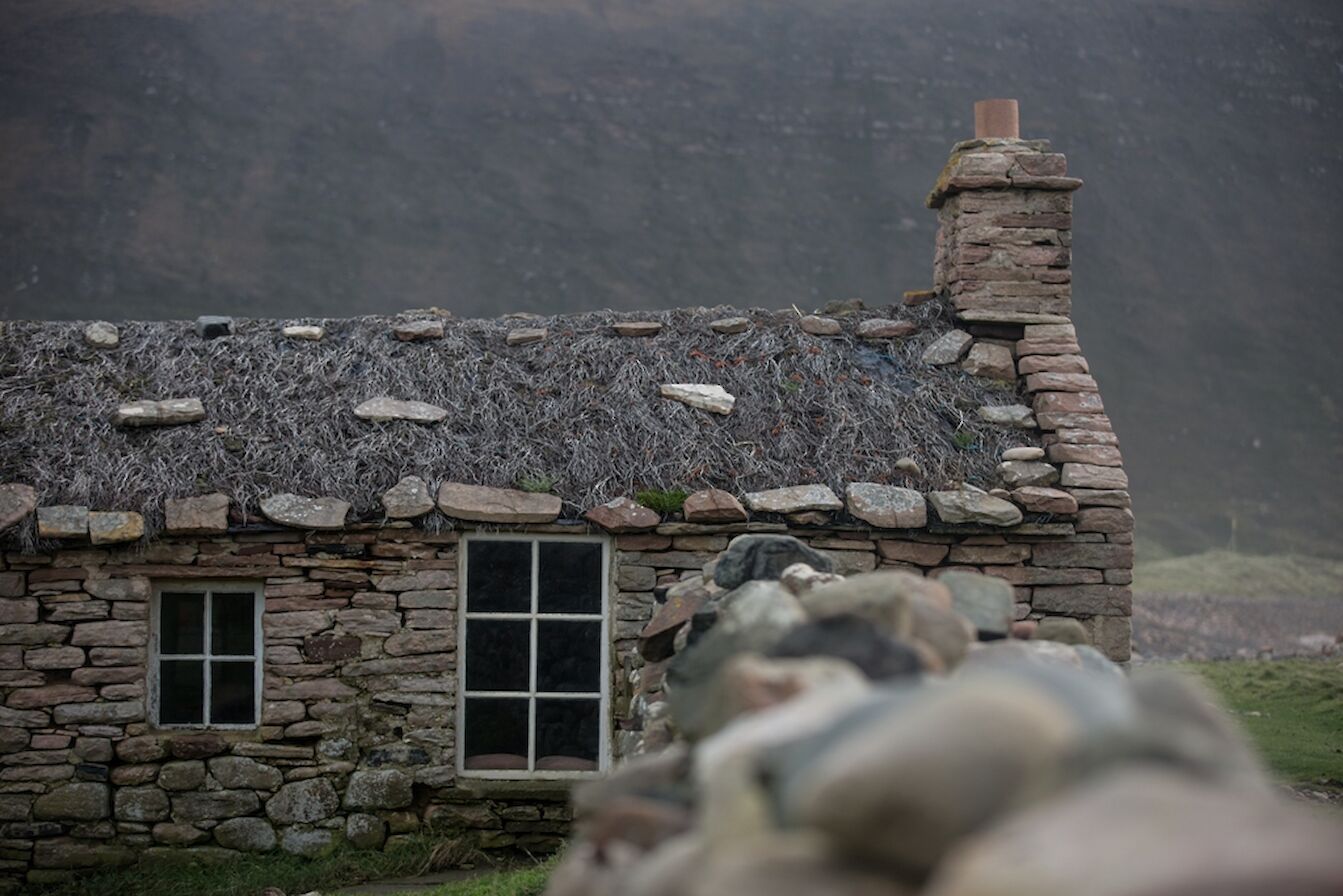One of the great wonders of the north end of Hoy is the sheer amount of beauty crammed into this modest landmass.
Within around 15 square miles you have Orkney’s two highest hills, Britain’s most northerly fragment of ancient woodland at Berriedale, the Old Man of Hoy - possibly the world’s most famous sea-stack - and the achingly beautiful bay and township of Rackwick. The only possible downside is that this proximity of attractions tempts the visitor to cram far too much into a single outing.
This is not a corner of Orkney to be unveiled in a day.

But on a wild autumn morning, when westerly gales slam hard into the brittle sandstone of St John’s Head, pushing great seas against the tides of Hoy Sound, the options become a little clearer: a low-level walk would be the choice of the wise, avoiding the considerable exposure on clifftop and summit.
The walkers’ way into Hoy has always been by foot-passenger ferry from Stromness. On a day like this you’ll be glad that the MV Graemsay opts for the sheltered detour around the back of the island after which she’s named, keeping well clear of the heavy seas funnelling in through the more direct route of Hoy Sound.
We push our way against the tide, before nudging alongside the pier at Moaness in Hoy. In a single step from deck to pier you leave behind the Orkney of gentle, pastoral landscapes, and move into something just a little wilder.
The way ahead is clear: the steep, brittle-cragged slopes of Ward Hill to the left and the more shapely form of Cuilag to the right draw the eye as you ascend around a mile and a half of single-track road towards the glen.
As the tarmac ends, you pass the Sandy Loch reservoir. The highest point of the route is just beyond the loch. At a little over a hundred metres the salted wind here funnels between the hills, tugging at waterproofs donned against the fast-moving showers.
From here the inner landscape of Hoy unfolds as you gradually descend into the glen. The focal point is undoubtedly the bluff of Grut Fea, the crags which shelter the sylvan oasis of Berriedale. This is the most northerly native woodland in the UK. Seed carried by wind and bird have been germinating throughout the glen. Keep your eyes peeled for the distinctive red berries of young rowan, poking cautiously through the heather. It’s tempting to sit and imagine how different this whole glen may look within a generation.

Berriedale itself is well worth the detour across the glen. But today the burns are running high and the bridgeless crossing would, at best, involve wet feet.
And there are still a good couple of miles to go. The path – while clear to follow – is soft in sections, and requires a bit of concentration throughout its length. The first footbridge coincides with the start of delightful scrubby woodland, interspersed with golden-brown fronds of bracken. On a summer’s day you can expect to be stiffly scolded here by stonechats, their distinctive alarm call melding with the sound of the Rackwick Burn.
Today though, there’s no such birdsong, just the sound of wind and fast-moving water. But as you approach the township of Rackwick these are joined by a deeper, more ominous sound; that of heavy Atlantic surf rolling boulders and pummelling sand and cliff in Orkney’s most dramatic bay.
Rackwick is a place out of time. A favoured spot for writers and artists like George Mackay Brown and Sylvia Wishart. It was home for many years to composer Sir Peter Maxwell Davies, who was drawn here by its exceptional sense of ‘silence’ – a seemingly inappropriate term on a day as elementally-animated as today.
Passing through the township you follow the sound of the surf down to the shore. On a wild day like today the bothy of Burnmouth offers a welcome shelter for digging out the flask and sandwiches. The building sits, hunkered close by the shore, looking impossibly small against the imposing backdrop of the cliffs to the south. Don’t forget to leave a small donation for the work of the trust, which maintains this fabulous building.
The bridge which once led across to the sandy side of the bay has been swept away, and currently looks unlikely to be replaced. Care should be taken crossing the mouth of the burn (sturdy walking-poles are a great assistance) and it should never be attempted when water levels are high – like today.
Still, there’s consolation in a wander amongst the beautifully rounded sandstone boulders, and time enough to gather some driftwood for the benefit of the bothy’s next overnight visitor. Out at sea an oil supply vessel lurches in from the west, disappearing at times behind the enormous swell. Among the cacophony of wind, surf and the call of the gulls, there gathers a sense of the silence sought by Sir Peter Maxwell Davies.
Then, it’s back up through the glen to Moaness and the ferry home, in the softening light of an autumn afternoon and glad to have the wind at your back. Stand on deck for the short, half-hour homeward ferry passage. There’s always a last bit of Hoy magic to be captured – no matter what the conditions.
Find out more about Hoy and search for accommodation in Orkney.
The Promoting Orkney project has been part financed by the Scottish Government and the European Community Orkney LEADER 2014-2020 Programme.









